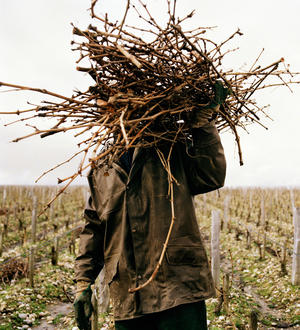2019 Ruchottes-Chambertin, Grand Cru, Domaine Mugneret-Gibourg, Burgundy
- Red
- Dry
- Full Bodied
- Pinot Noir
For laying down
Product: 20198120737
75 cl Bottle
Colour Red
Sweetness Dry
Vintage 2019
Alcohol % 14
Maturity For laying down
Grape List Pinot Noir
Body Full Bodied
Producer Domaine Mugneret-Gibourg
About this wine

Pinot Noir
Pinot Noir is probably the most frustrating, and at times infuriating, wine grape in the world. However when it is successful, it can produce some of the most sublime wines known to man. This thin-skinned grape which grows in small, tight bunches performs well on well-drained, deepish limestone based subsoils as are found on Burgundy's Côte d'Or. Pinot Noir is more susceptible than other varieties to over cropping - concentration and varietal character disappear rapidly if yields are excessive and yields as little as 25hl/ha are the norm for some climats of the Côte d`Or.
Find out more

Domaine Mugneret-Gibourg
Until the summer of August 2009 there were two domaines, Mugneret-Gibourg and Dr Georges Mugneret. The former was created in 1933 following the marriage of André Mugneret, from an old Vosne Romanée family, and Jeanne Gibourg in 1928. Their son, Dr Georges Mugneret, whose principal profession was as an opthalmist, purchased further vineyards using a label in his own name. The Mugneret-Gibourg vines were looked after by sharecroppers, which remains the case today in the hands of Fabrice Vigot and Pascal Mugneret. The Dr Georges Mugneret vines are exploited directly. After Dr Georges early death in 1988 the domaine was run by his widow, Jacqueline and their daughter, Marie-Christine, joined by their other daughter Marie-Andrée in 1992 after she had completed her studies. The sisters have not made any significant innovations in the cellar, beyond a sorting table and a pneumatic press. The grapes are destemmed, given a short cool maceration then left to ferment over the following 10-14 days the village wines receive 30% new wood, 40-45% for the premiers crus and around 70% for the grands crus. After the malolactic fermentation they wines are racked into another cellar for their second winter in wood, thence into small blending tanks and so into bottle. These tanks and the bottling are both done in the same underground cellar as the second year barrels, avoiding pumping or change in temperature. The Bourgogne Rouge, Nuits-St-Georges, Vosne-Romanée and Echézeaux vineyards are farmed on share-cropping agreements so the domaine does not receive all the fruit. There are two separate sharecroppers, Fabrice Vigot and Pascal Mugneret, both of whom look after the vineyards to a high standard. Jasper Morris MW, Burgundy Wine Director and author of the award-winning Inside Burgundy comprehensive handbook.
Find out more
